MTR
 Bashny.Net
Bashny.Net
Hong Kong has a highly sophisticated transport system, including public and private transport. Over 80% of Hong Kong residents traveling to make public transport. The public transport system includes a subway (MTR), commuter and intercity electric (KCR), bus, ferry service between the island and the mainland part of the city, as well as the adjacent islands, tram and funicular railway, which connects downtown with the peak of Victoria. Also used as a transport network moving sidewalk - moving walkways and escalators - similar to a combined escalator connects the lower terrace of Hong Kong Island from the top.
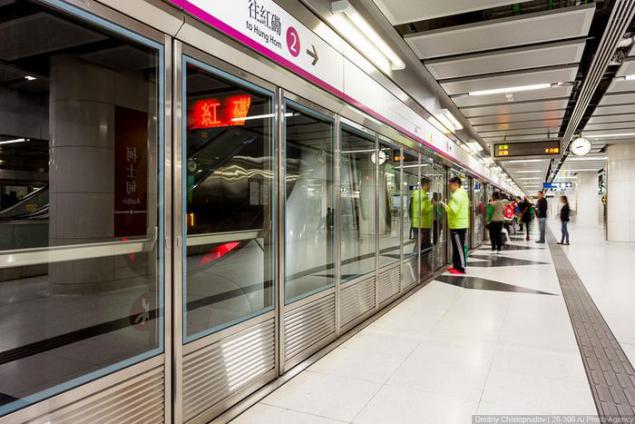

Use of public transport in Hong Kong - a pleasure. All is left to chance, the ideal navigation, to which we still like the moon, a comfortable environment for people with disabilities, clean and tidy. And people. They are kind, or what.
Logo subway station Central. Separate entrance hall in the center there is little, they are usually integrated into the shopping and office centers. Each station has multiple entrances, and at least one of them is equipped with an elevator for the disabled, which connect the platform to the lobby.
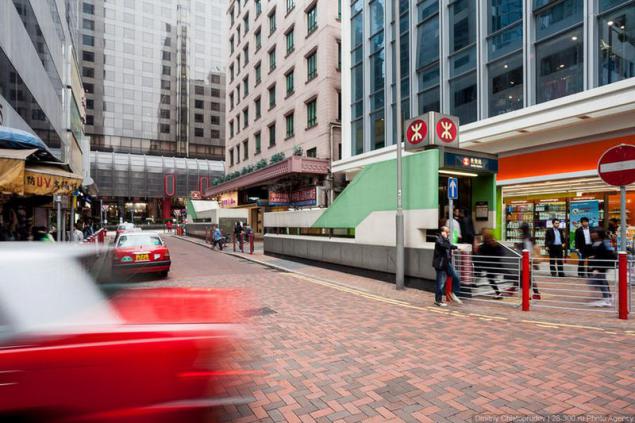
One of the entrance hall station Jordan. Across the width of the ladder narrower than our usual subways.
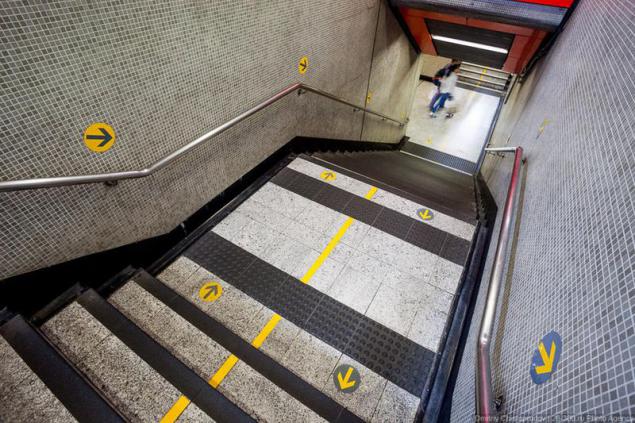
Here's a narrow descent. In general, it seems that in Hong Kong, all in 1, 5 times longer and thinner than ours. To prevent the pandemonium of people on the stairs marked with guides (RHD). Pay attention to the tactile tiles for visually impaired people. She is beautiful!
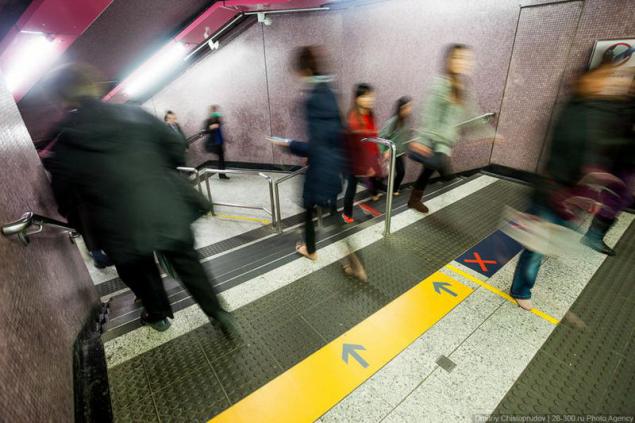
MTR
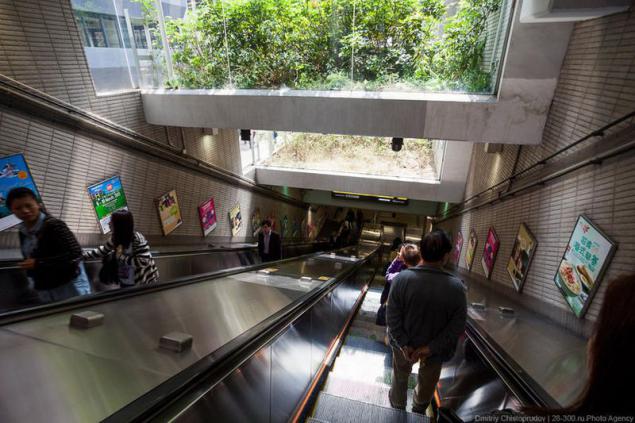
Escalators at the station Wan Chai.
We go down in the subway and come to the ticket machines. In Hong Kong, there are three categories of subway passengers to pay for travel: students, adults and beneficiaries. Children under three years old are allowed to carry free of charge.

Taking any station for the start of the route, the rest fall into different "zones" of tariffs, depending on the distance from the first station. If the start and end stations belong to the same tariff zone, the fare is independent of their geographical remoteness from each other, but if the stations belong to different zones, the fare increases with the distance between them, especially if the trip involves crossing Victoria Harbour.
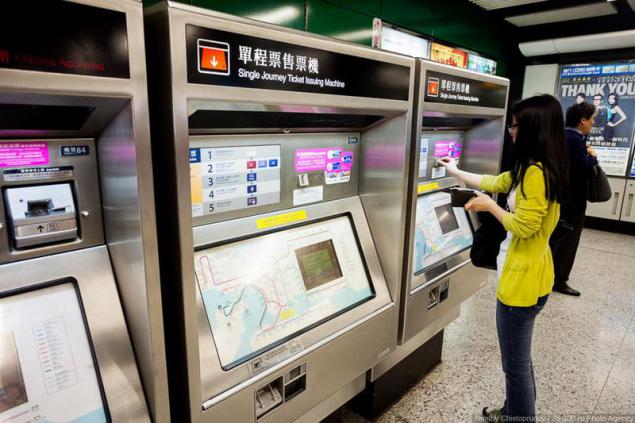
Tickets for adults ranging from 10 to 200 rubles depending on the distance. Reduced fee is usually half. The photograph shows the vending tickets for one trip. In total there are 3 types of tickets:
- 1 ticket for a trip to a particular station,
- Contactless Octopus card,
- Travel tickets.
Ticket or Octopus card you can buy the ticket machines or at the box office. Credit cards are accepted when purchasing tickets only on the Airport Express line.
1 ticket for the trip. He needed twice - for the passage of the station where the ticket was bought, and to enter the destination station.
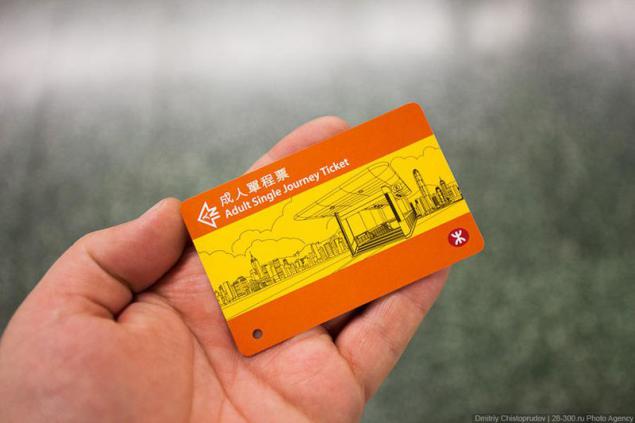
In this case, the ticket is not a one-time, as we have in Moscow. Rather than fly in a big black bucket eaten ticket turnstile at the exit. Then he re-enters the ticket machines.

Octopus card - contactless card, which is used in the electronic payment system in Hong Kong. Octopus cards were issued in September 1997 for use in the subway, but subsequently became widespread and is now used everywhere: in shops, restaurants, cafes and other institutions as a means of electronic payment. It's damn convenient!
Rates in Hong Kong subway slightly lower when using the Octopus card than when using conventional ticket, the only exception is the Airport Express line. For example, the cost of a three-minute drive from the Admiralty to Tsim Sha Tsui across Victoria Harbour using the Octopus card is 30 rubles, and with the usual single ticket - 34 rubles.
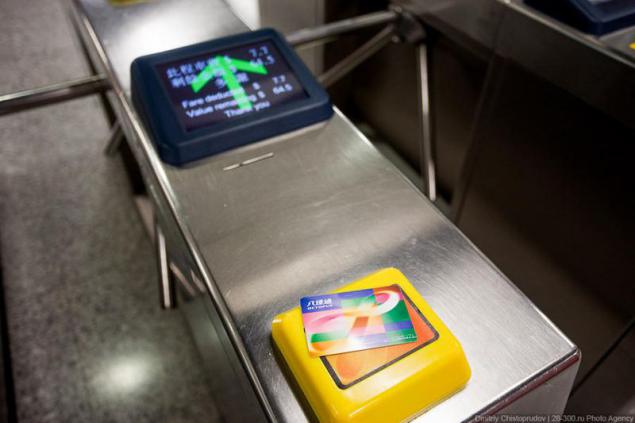
When reading the card on the turnstile displays information about the cost of the last trip (output) and a quantity of the remaining funds in the account. All in two languages.

Tourist ticket entitles you to unlimited travel in Hong Kong subway within a month on all lines except the Airport Express, as well as trips to the first-class carriage Eastern lines and buses MTR. Each ticket costs 1700 rubles and sold at the box office subway stations. Tourist ticket must be used within 30 days from the date of issue.
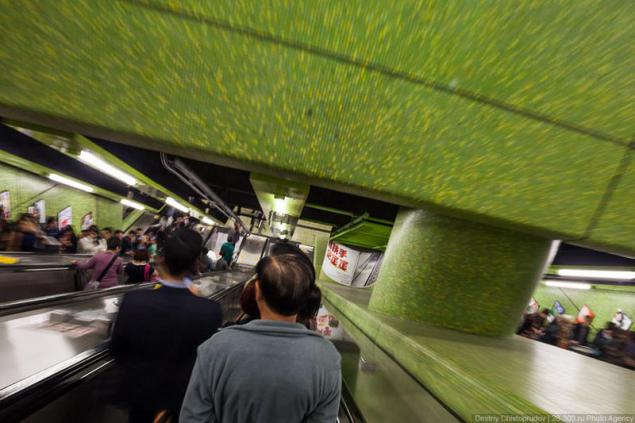
Architecture and design are subject to MTR purely utilitarian purpose. Decorating stations hardly paid attention, most of the stations are similar and differ only in the main color. In this regard, the central Moscow metro stations ahead of the rest.
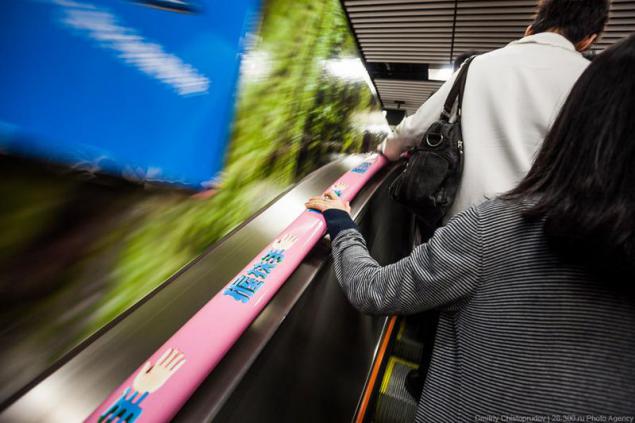
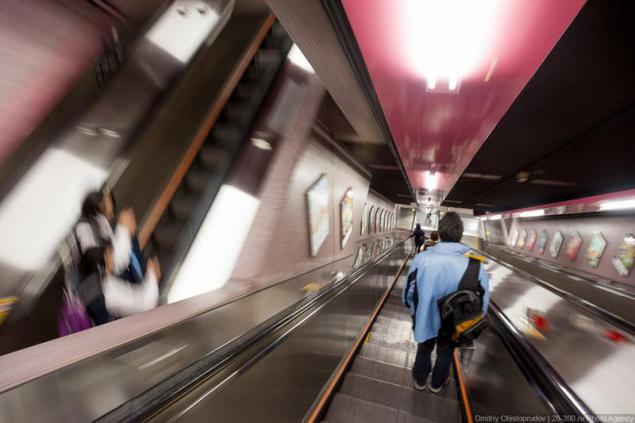
Above the platform set the scoreboard, which displays the time until the next train and end station (direction to avoid confusion).
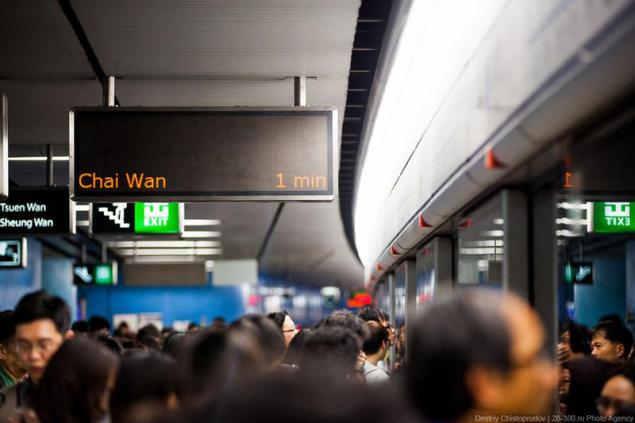
Interval of trains 2 times less than in Moscow. From 2-3 minutes to 10. Waiting for the train, people line up in a neat line in front of glass doors that separate the platform from the tracks.

Junctions between the lines and the Kwun Tong District Tsuen Wan District, between the lines and Chёnkuanou Island, as well as between the lines and the Kwun Tong District Chёnkuanou is cross-platform, in which a passenger train left on one side of the platform, the other gets on the train line on the other side (as in our China-town). Junctions become more comfortable for passengers, they now do not need to change floors stations of different lines. Such traffic management operates when interchange hub comprises two platforms, each of which different train lines arriving, moving about in the same direction.

When a lot of passengers on the platform comes a special person who manages the crowd during landing and prevents chaos.
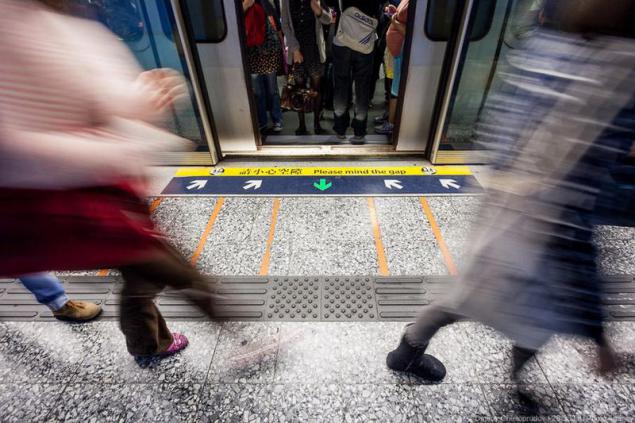
Partitioning for queuing and correct tactile tiles.
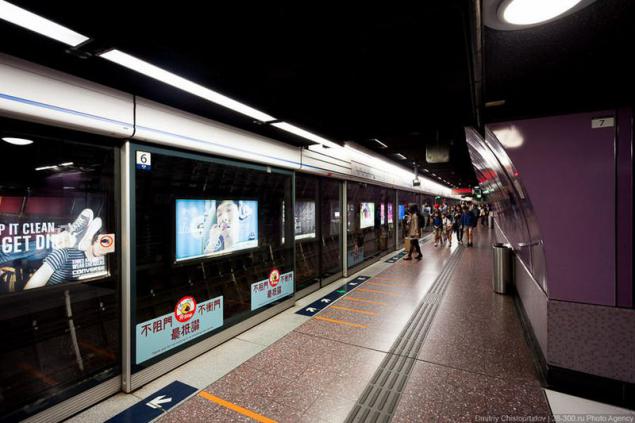
At most stations installed glass doors. With these flaps in the platform has become more secure, they prevent people from falling onto the tracks. However, the primary motivation was to separate the station from the tunnels, allowing significant energy savings for the tunnel ventilation and air conditioning plants. Travel on the walls hang huge TV advertising.
. All trains on the lines of Kwun Tong District, Tsuen Wan District, Island Tunchhun, Airport Express and Chёnkuanou consist of eight cars. Subway cars, trains except the Airport Express line and first-class carriage Eastern line, have a high capacity and passenger capacity.
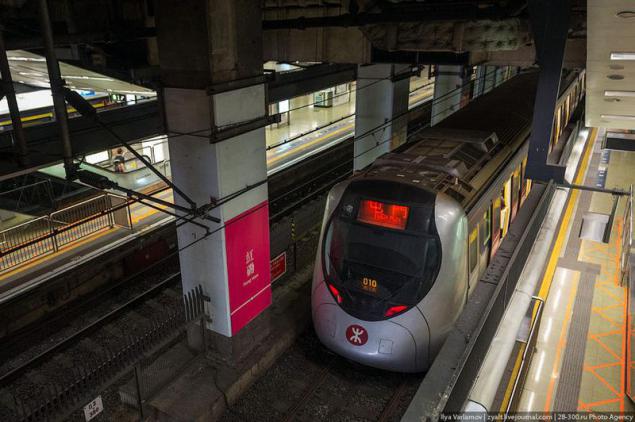
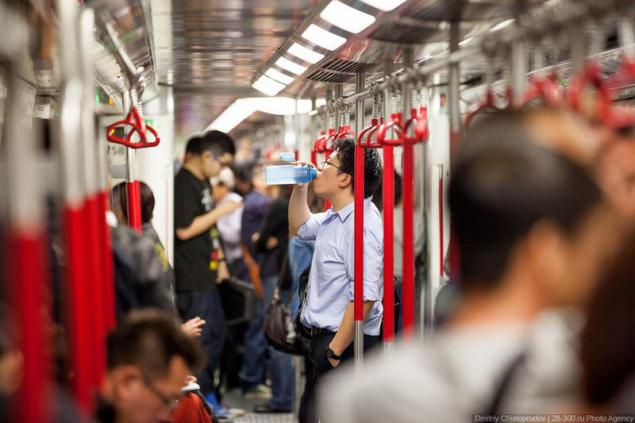
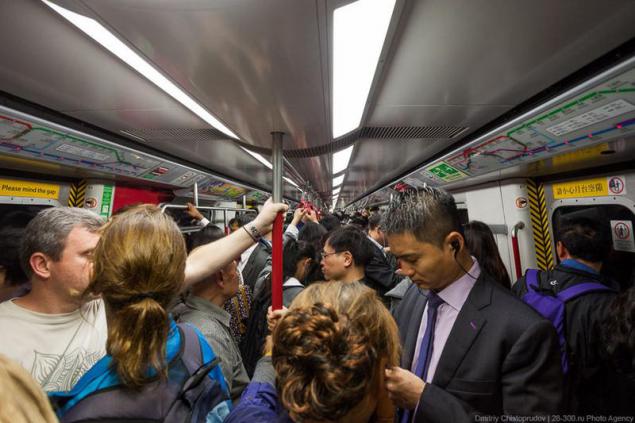
The cars class "standard" have five wide doors on each side.

On annual passenger traffic, which in 2012 amounted to 1,443,735,000 people MTR takes 4th place in China and 10th in the world. The average passenger per day is about 4 million people (it is 2 times lower in Moscow).
Inside, the air conditioning system works and ventilation. Sometimes so hard that blows out the neck. On metal handrails have a special anti-slip coating. Train speed reaches 100 km / h.
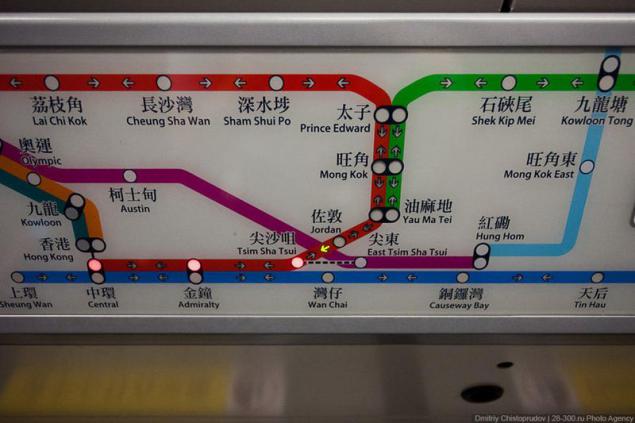
Apart from the usual schemes subway in many formulations set naddvernye Destination sign that shows the current location of the train and its direction of motion.
Exit the car. Then the fun begins - navigation.
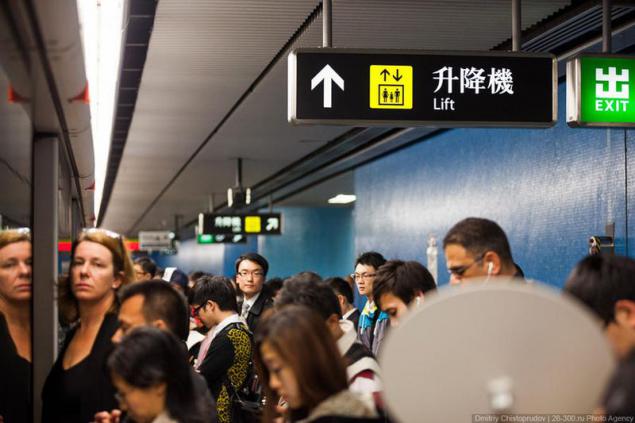
At each station are hanging detailed diagrams for each level of the lobby, and a map of the city in the area of the metro station. Each output is denoted by Latin letters.

Example city maps around the station Yau Ma Tei. All objects are separated into categories (hotels, shops, schools, and so on). The main objects are duplicated photos.
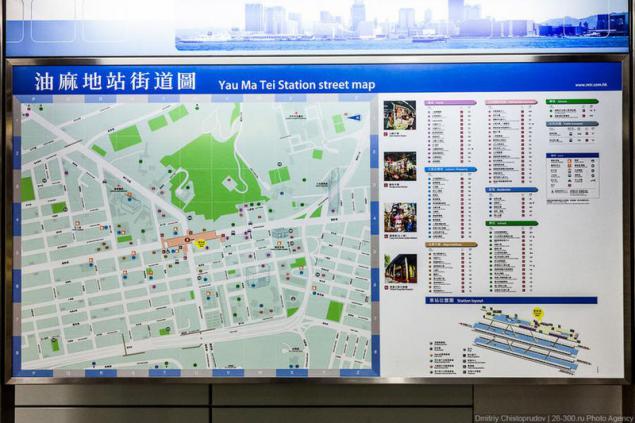
Scan Central Station.
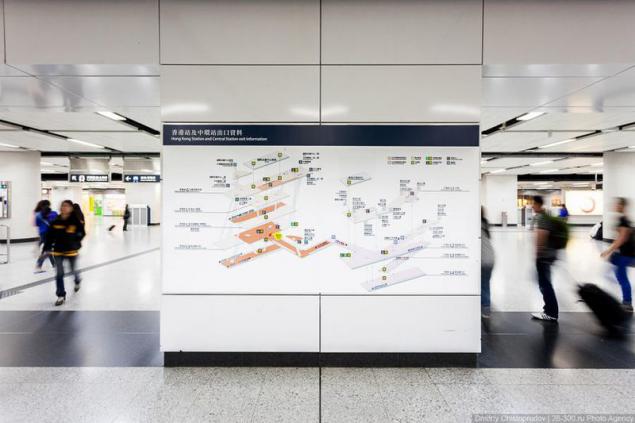
Closer. Only the first few seconds of terrible and nothing is clear.

For tourists there are special points with computers and free vayfay.
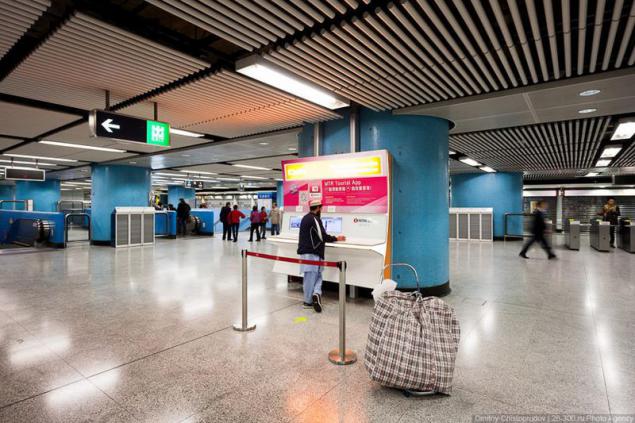
You can view the city map, write a letter, or even play.

Assign each output your letter - it's brilliant!
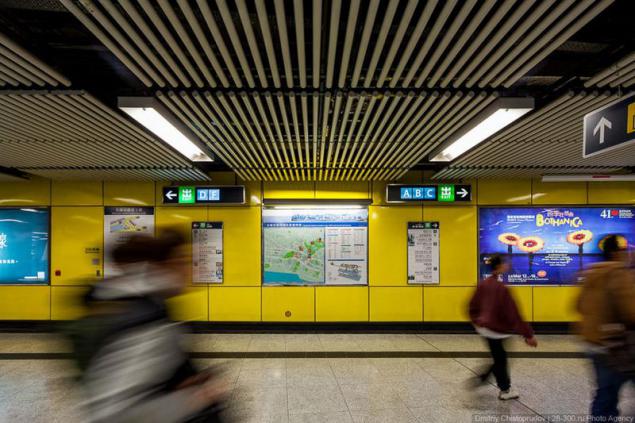
On the second day I was guided by any unfamiliar stations and junctions of the Hong Kong subway faster than in Moscow.
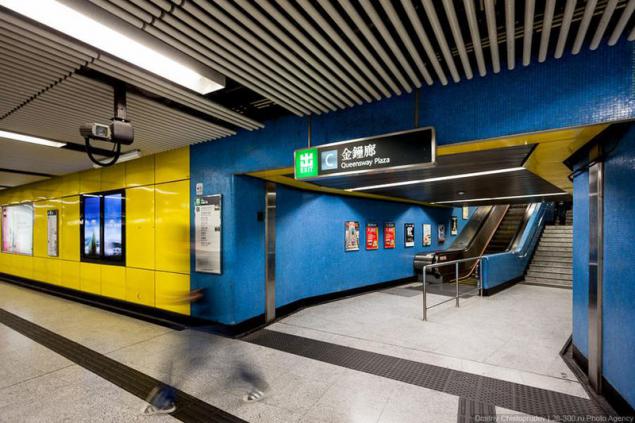
The network consists of 210 subway lines, 6 km of track and 152 stations, including 68 light rail stations.
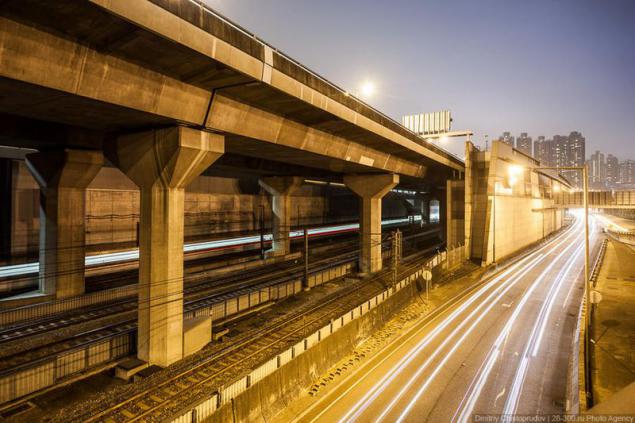
Express to the airport. Nothing is more convenient yet in my life met. At the stations, Hong Kong and Kowloon, you can check in, drop off your luggage and light drive to the airport.
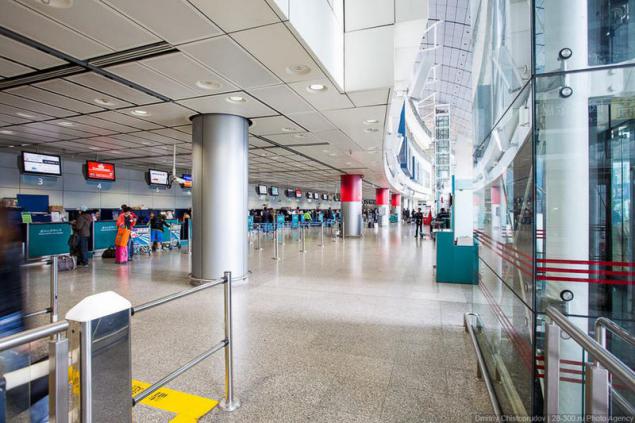
Hong Kong to the station we arrived by taxi from the hotel. Hire 50 meters their suitcases to check-in desks and passed the luggage. Another 50 meters, two floors in the elevator and here we are on the train.

Average maximum speed between stations is 130 kilometers per hour, so to get from downtown to the airport in just 24 minutes.
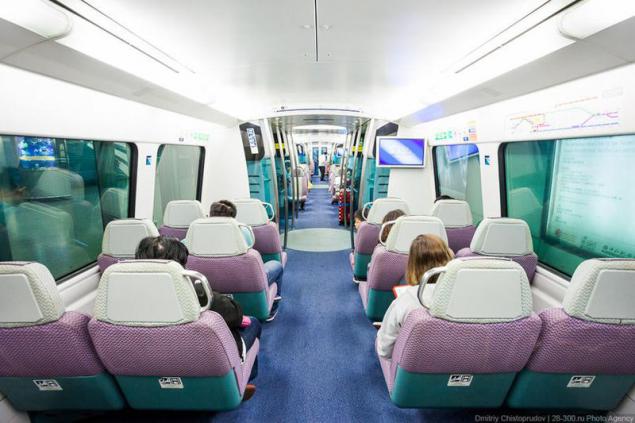
Fast and convenient train service with 12-minute intervals.
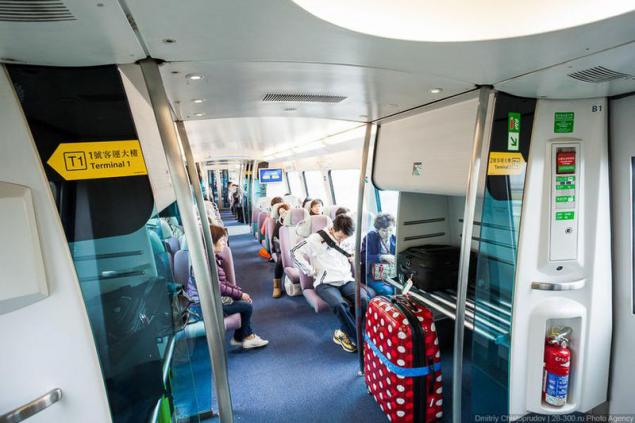
The train stops clearly between the two terminals. Exit left - Terminal 1, right - Terminal 2.
Source: belorys-kh.livejournal.com


Use of public transport in Hong Kong - a pleasure. All is left to chance, the ideal navigation, to which we still like the moon, a comfortable environment for people with disabilities, clean and tidy. And people. They are kind, or what.
Logo subway station Central. Separate entrance hall in the center there is little, they are usually integrated into the shopping and office centers. Each station has multiple entrances, and at least one of them is equipped with an elevator for the disabled, which connect the platform to the lobby.

One of the entrance hall station Jordan. Across the width of the ladder narrower than our usual subways.

Here's a narrow descent. In general, it seems that in Hong Kong, all in 1, 5 times longer and thinner than ours. To prevent the pandemonium of people on the stairs marked with guides (RHD). Pay attention to the tactile tiles for visually impaired people. She is beautiful!

MTR

Escalators at the station Wan Chai.
We go down in the subway and come to the ticket machines. In Hong Kong, there are three categories of subway passengers to pay for travel: students, adults and beneficiaries. Children under three years old are allowed to carry free of charge.

Taking any station for the start of the route, the rest fall into different "zones" of tariffs, depending on the distance from the first station. If the start and end stations belong to the same tariff zone, the fare is independent of their geographical remoteness from each other, but if the stations belong to different zones, the fare increases with the distance between them, especially if the trip involves crossing Victoria Harbour.

Tickets for adults ranging from 10 to 200 rubles depending on the distance. Reduced fee is usually half. The photograph shows the vending tickets for one trip. In total there are 3 types of tickets:
- 1 ticket for a trip to a particular station,
- Contactless Octopus card,
- Travel tickets.
Ticket or Octopus card you can buy the ticket machines or at the box office. Credit cards are accepted when purchasing tickets only on the Airport Express line.
1 ticket for the trip. He needed twice - for the passage of the station where the ticket was bought, and to enter the destination station.

In this case, the ticket is not a one-time, as we have in Moscow. Rather than fly in a big black bucket eaten ticket turnstile at the exit. Then he re-enters the ticket machines.

Octopus card - contactless card, which is used in the electronic payment system in Hong Kong. Octopus cards were issued in September 1997 for use in the subway, but subsequently became widespread and is now used everywhere: in shops, restaurants, cafes and other institutions as a means of electronic payment. It's damn convenient!
Rates in Hong Kong subway slightly lower when using the Octopus card than when using conventional ticket, the only exception is the Airport Express line. For example, the cost of a three-minute drive from the Admiralty to Tsim Sha Tsui across Victoria Harbour using the Octopus card is 30 rubles, and with the usual single ticket - 34 rubles.

When reading the card on the turnstile displays information about the cost of the last trip (output) and a quantity of the remaining funds in the account. All in two languages.

Tourist ticket entitles you to unlimited travel in Hong Kong subway within a month on all lines except the Airport Express, as well as trips to the first-class carriage Eastern lines and buses MTR. Each ticket costs 1700 rubles and sold at the box office subway stations. Tourist ticket must be used within 30 days from the date of issue.

Architecture and design are subject to MTR purely utilitarian purpose. Decorating stations hardly paid attention, most of the stations are similar and differ only in the main color. In this regard, the central Moscow metro stations ahead of the rest.


Above the platform set the scoreboard, which displays the time until the next train and end station (direction to avoid confusion).

Interval of trains 2 times less than in Moscow. From 2-3 minutes to 10. Waiting for the train, people line up in a neat line in front of glass doors that separate the platform from the tracks.

Junctions between the lines and the Kwun Tong District Tsuen Wan District, between the lines and Chёnkuanou Island, as well as between the lines and the Kwun Tong District Chёnkuanou is cross-platform, in which a passenger train left on one side of the platform, the other gets on the train line on the other side (as in our China-town). Junctions become more comfortable for passengers, they now do not need to change floors stations of different lines. Such traffic management operates when interchange hub comprises two platforms, each of which different train lines arriving, moving about in the same direction.

When a lot of passengers on the platform comes a special person who manages the crowd during landing and prevents chaos.

Partitioning for queuing and correct tactile tiles.

At most stations installed glass doors. With these flaps in the platform has become more secure, they prevent people from falling onto the tracks. However, the primary motivation was to separate the station from the tunnels, allowing significant energy savings for the tunnel ventilation and air conditioning plants. Travel on the walls hang huge TV advertising.
. All trains on the lines of Kwun Tong District, Tsuen Wan District, Island Tunchhun, Airport Express and Chёnkuanou consist of eight cars. Subway cars, trains except the Airport Express line and first-class carriage Eastern line, have a high capacity and passenger capacity.



The cars class "standard" have five wide doors on each side.

On annual passenger traffic, which in 2012 amounted to 1,443,735,000 people MTR takes 4th place in China and 10th in the world. The average passenger per day is about 4 million people (it is 2 times lower in Moscow).
Inside, the air conditioning system works and ventilation. Sometimes so hard that blows out the neck. On metal handrails have a special anti-slip coating. Train speed reaches 100 km / h.

Apart from the usual schemes subway in many formulations set naddvernye Destination sign that shows the current location of the train and its direction of motion.
Exit the car. Then the fun begins - navigation.

At each station are hanging detailed diagrams for each level of the lobby, and a map of the city in the area of the metro station. Each output is denoted by Latin letters.

Example city maps around the station Yau Ma Tei. All objects are separated into categories (hotels, shops, schools, and so on). The main objects are duplicated photos.

Scan Central Station.

Closer. Only the first few seconds of terrible and nothing is clear.

For tourists there are special points with computers and free vayfay.

You can view the city map, write a letter, or even play.

Assign each output your letter - it's brilliant!

On the second day I was guided by any unfamiliar stations and junctions of the Hong Kong subway faster than in Moscow.

The network consists of 210 subway lines, 6 km of track and 152 stations, including 68 light rail stations.

Express to the airport. Nothing is more convenient yet in my life met. At the stations, Hong Kong and Kowloon, you can check in, drop off your luggage and light drive to the airport.

Hong Kong to the station we arrived by taxi from the hotel. Hire 50 meters their suitcases to check-in desks and passed the luggage. Another 50 meters, two floors in the elevator and here we are on the train.

Average maximum speed between stations is 130 kilometers per hour, so to get from downtown to the airport in just 24 minutes.

Fast and convenient train service with 12-minute intervals.

The train stops clearly between the two terminals. Exit left - Terminal 1, right - Terminal 2.
Source: belorys-kh.livejournal.com
Tags
See also
Interesting facts about the subway
Interesting markets in the world
Top 10 most unusual viewing platforms in the world
The end of the end of the world, beautiful photos of Indian start-up and launch date heavy "Angara"
10 most interesting images of the microscopic world («Science-Photo»)
Any interesting about the World Wide Web
10 most beautiful cities in the world
The most beautiful photos of the week (60 photos)
The most beautiful photos of the week (60 photos)
Cherax pulcher — the world's most beautiful freshwater cancer
















